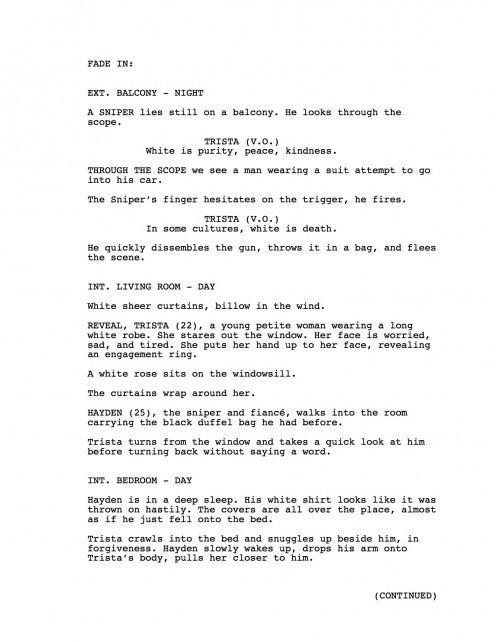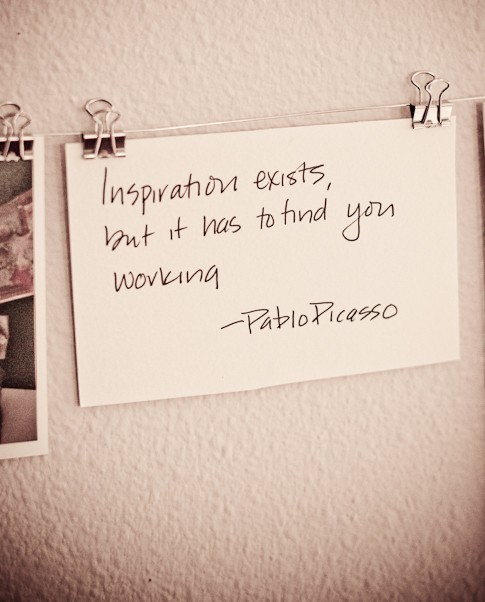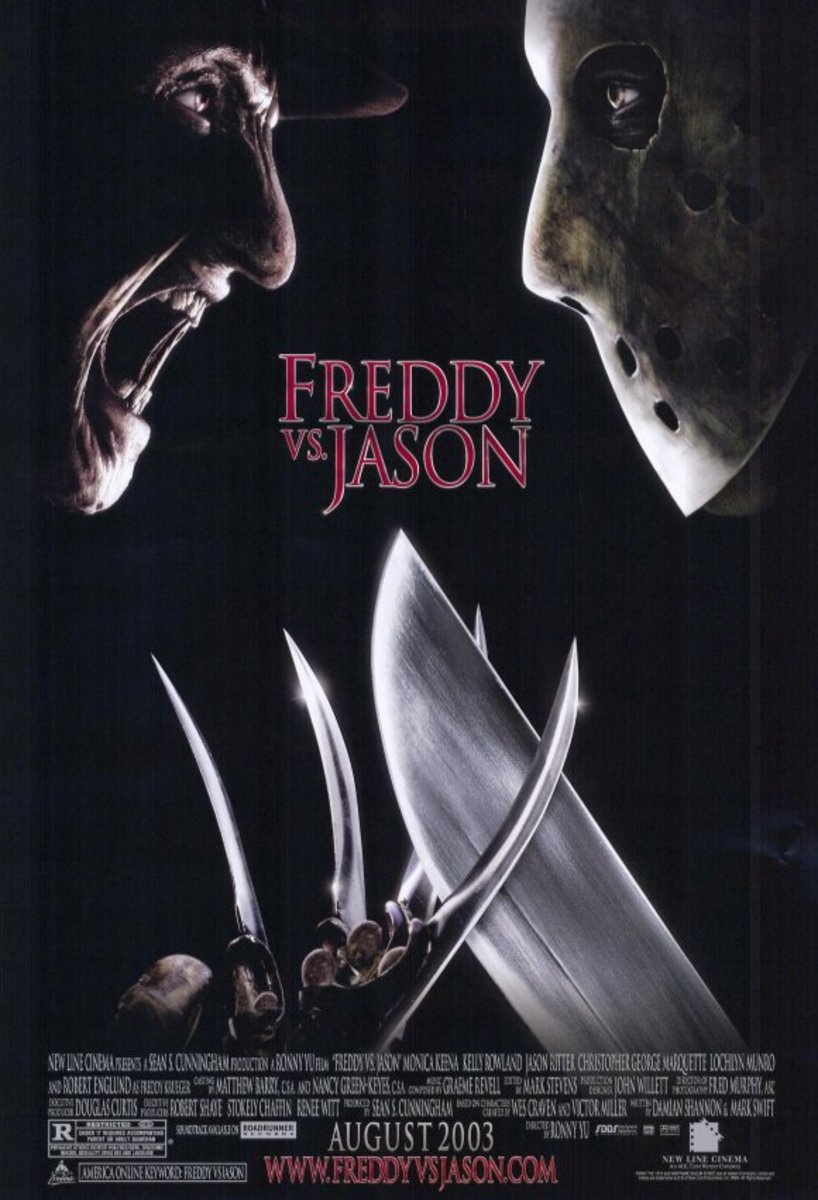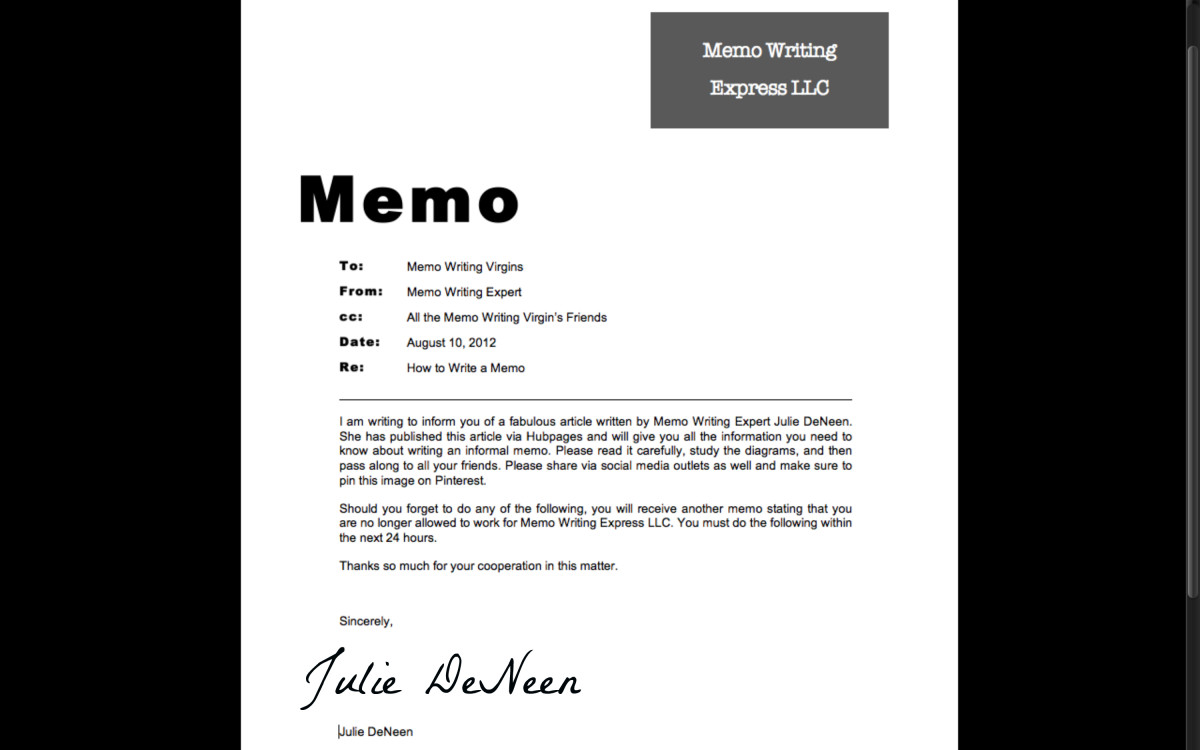Writing a Short Film Script

Short films may seem like an easy form of writing, but it’s not. There’s a lot of planning to go into writing a short to make it tell the right story. In contrast to a feature, which is comprised of a bunch of little events that are some how connected to tell a larger story, a short is two or three events that portray a small sequence of that character’s life. That small sequence must have a beginning, middle, end and must have the same arc or change a character may experience in long-form.
Are you ready for the challenge?
First, Watch Short Films
There are hundreds of short films out there in the cineverse that you can find and watch. Take notes on how the writer introduces their characters, their problems, and how they come to their solutions. Sometimes there isn’t a solution. Figure out from what you’ve seen what kind of film you’d like to write. Are you interested in the animation shorts? Maybe you are more of a drama-lover? Whatever it is, choose it and watch more short films in that genre.
I recently watched “God of Love” written and directed by Luke Matheny. He also won an Academy Award for this film. I found this story interesting and it was a great representation of how a short film should be. It’s no wonder he got an award. He introduced his character and his problem within the short few minutes we meet him on screen. His trials and tribulations were portrayed through comedic montages and inner monologues. In the end, we see he accepts his fate and moves on in life.
I’m not saying that all short films need monologues and montages, but it’s definitely a way to show a lot with small amount of time.
How Many Pages Make Up a Short Script?
How long do you want your story to be? Are you willing to squeeze it into a two-minute film or would you rather have a little time to resolve everything in thirty minutes? In the end, it’s up to you as a writer how long you want your short film to be. Now, most festivals accept up to thirty minutes for a fully produced short film, but I’ve seen in screenplay competitions that some accept up to sixty pages! I think it’s because a feature length script usually starts at ninety pages and more.
Anything more than sixty pages is just pushing the envelope and pretty much saying you couldn’t make it to feature length, so you’re throwing it in as a short. If that’s the case for you, look back at the script and take out some unnecessary scenes. Trust me, there will be a lot of them. After that, you might just have a good thirty-page script to submit for competitions or have produced into a short film.
Formatting
A script is a script is a script. The way your format your short film script doesn’t change because it’s a short film script.
“But, I don’t know how to format a regular script!”
Well, I’ll show you.
Here’s a page excerpt from one of my short films that I wrote and directed while I was a student at RIT:

If you don’t have writing software like Final Draft INC., Celtx, Movie Magic, etc., don’t fear! Microsoft Word or related software can still be here for you!
I’ll give you the list of margins needed for each section of the script using Microsoft Word.
Your page margins should be the following (you can change this in the Page Setup section or Page Layout section of your word processor):
Top: 1”
Bottom: 1”
Left: 1.5”
Right: 1”
Now on to the script elements.
Slug (Scene Heading): Left-aligned
Action: Left-aligned
Character: 2 ½ “ from the left
Parenthetical: 2” from the left
Dialog: 1 ½ “ from the left
Transition: Right-aligned
You got it all down? Great!
Here’s the nitty-gritty of each element.
The Sluglines, Transitions, and Characters are all caps.
Your Action lines, Dialogue, and Parentheticals are written like you would regularly, majority is in lowercase.
NOTE: If you are introducing a character, singling out a certain object/sound, or identifying type of shot, then put it in all caps.
NOTE 2.0: When describing character, it’s also important to add in age. Most scripts have it written in parentheticals.
In your Slugline, you’re describing where and when the scene is taking place.
- Interior (INT.) or Exterior (EXT.)
- Location
- Day or Night
ex: INT. BEDROOM – NIGHT
The time of day is always separated from the location by a dash.
Now, if you have multiple locations with the same heading, such as HOUSE and SCHOOL, you can add additional information with a dash in between:
INT. SCHOOL – HALL – DAY
INT. HOUSE – BEDROOM – NIGHT
I indicated on my script what I was talking about.

Structure
This is where it gets a little different from a script in long-form. A traditional screenplay is built with a three-act structure deriving from Aristotle’s Poetics. A short film already had it’s beginning when the script begins and is just getting to its middle and ends satisfyingly – yet still leaving room for something more. It’s more of a situation, or specific event happening to your character(s) than an elaborate mix of plot points and conflicts.
While outlining your story keep in mind on how long you want this film to be. Highlight what the problem will be and find out the resolution. When you have this figured out, then you can place in the one or two obstacles your character(s) will face on the way to their goal. Remember, this is a short film, not a feature, so don’t put in a hundred events that prevent them from getting to where they want… unless you can do it in a clever one-minute montage sequence.
Keep in mind of how many locations you are using. If this will be submitted for a low-budget film, then you want to use as few locations as possible. It makes the script more marketable for the independent filmmakers or better for your pocket if you’re doing it on your own.

Ready to Rock 'n Roll...
... I mean write!
So, we got the basics on writing a short film, now it’s time to write one! Open up your imagination, push the boundaries of story telling, and create a wonderful short script that might even be Oscar-worthy.
When you find it challenging to write your story, sit back and read subjectively. Think, “what can I take out?” or “what can I add?”
Suddenly an idea strikes and you’re back on the journey.
Remember, have fun with it all.
Happy writing!








